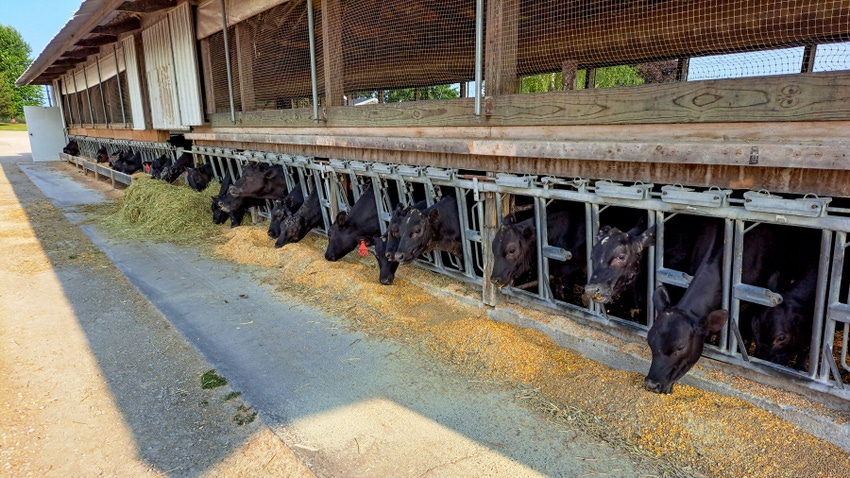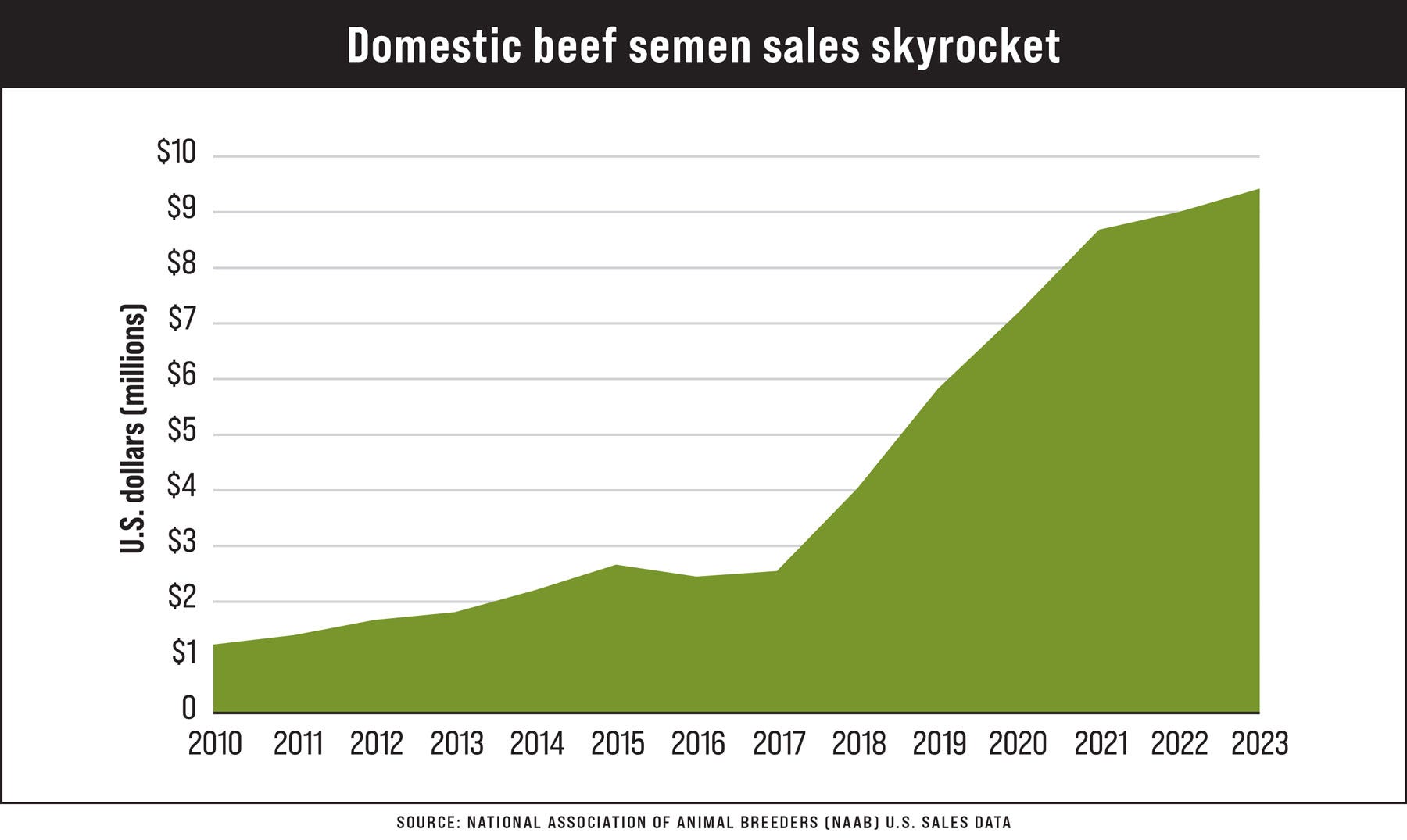
U.S. milk production has been flat for more than eight months, even though milk component production grows annually by roughly 1%, according to USDA.
“The main reason for concern about stagnant growth of the milk supply is the decline in dairy replacement numbers,” says Corey Geiger, lead dairy economist for CoBank. “Dairy replacements expected to enter the U.S. milking herd fell 709,100 head in the past six years to reach a 20-year low. Record beef prices have encouraged dairy farmers to use even more beef semen on their dairy cows to capture premiums in the beef market, as newborn crossbred calves are fetching $800 to $950.”
Sky-high beef-on-dairy prices
Geiger says he has spoken to dairy farmers throughout the U.S. in recent weeks.
“When I asked audiences how many have received more than $900 for a beef-on-dairy-cross calf, nearly every hand was raised. When asked how many received over $1,000 for a calf, more than half the hands stay raised,” he says. “Given these returns, the beef-on-dairy shift will continue to be a major focus for dairy farmers, even as dairy replacement numbers remain at a 20-year low.”
According to Geiger, U.S. dairy farmers are moving full steam ahead with a plan to produce two kinds of calves: dairy heifers and beef-on-dairy crossbreds.
“In 2023, U.S. bull studs sold a record 9.4 million units of beef semen, and a whopping 84% — 7.9 million units — was sold to dairy farmers,” Geiger says.
The trend shows no signs of slowing, with beef semen sales surpassing the 7 million units of conventional dairy semen, according to data from the National Association of Animal Breeders.
“The only category with higher semen sales than beef is gender-selected dairy semen,” Geiger notes. That category totaled 8.4 million units and accounted for 54% of all dairy semen sales.
Meanwhile, in 2023, cattle ranchers purchased 1.5 million units of beef semen, which is 600,000 fewer units than in 2022.

Geiger explains that as replacement values have skyrocketed from $1,200 per head in 2019 to $2,800 per head or more this year, farmers have pulled way back on culling to keep dairy barns full.
“Compared to January to March of last year, dairy cow culling is down 123,000 head, and this is taking place during an era of record beef prices,” he says.

However, when dairy replacement values were low, exports of replacement heifers had grown. That, too, may subside given rising prices, Geiger says. “A recent shipment of replacement heifers that were five to six months pregnant left a U.S. port at $2,600 per head. That was the highest price on record for that exporter,” he says.
While the impact of highly pathogenic avian influenza on dairy cows in several states continues to draw concern, it has not had much impact on the market through mid-April.
“The situation definitely warrants further monitoring, as it could impact culling and cattle inventories,” Geiger says.
About the Author(s)
You May Also Like






